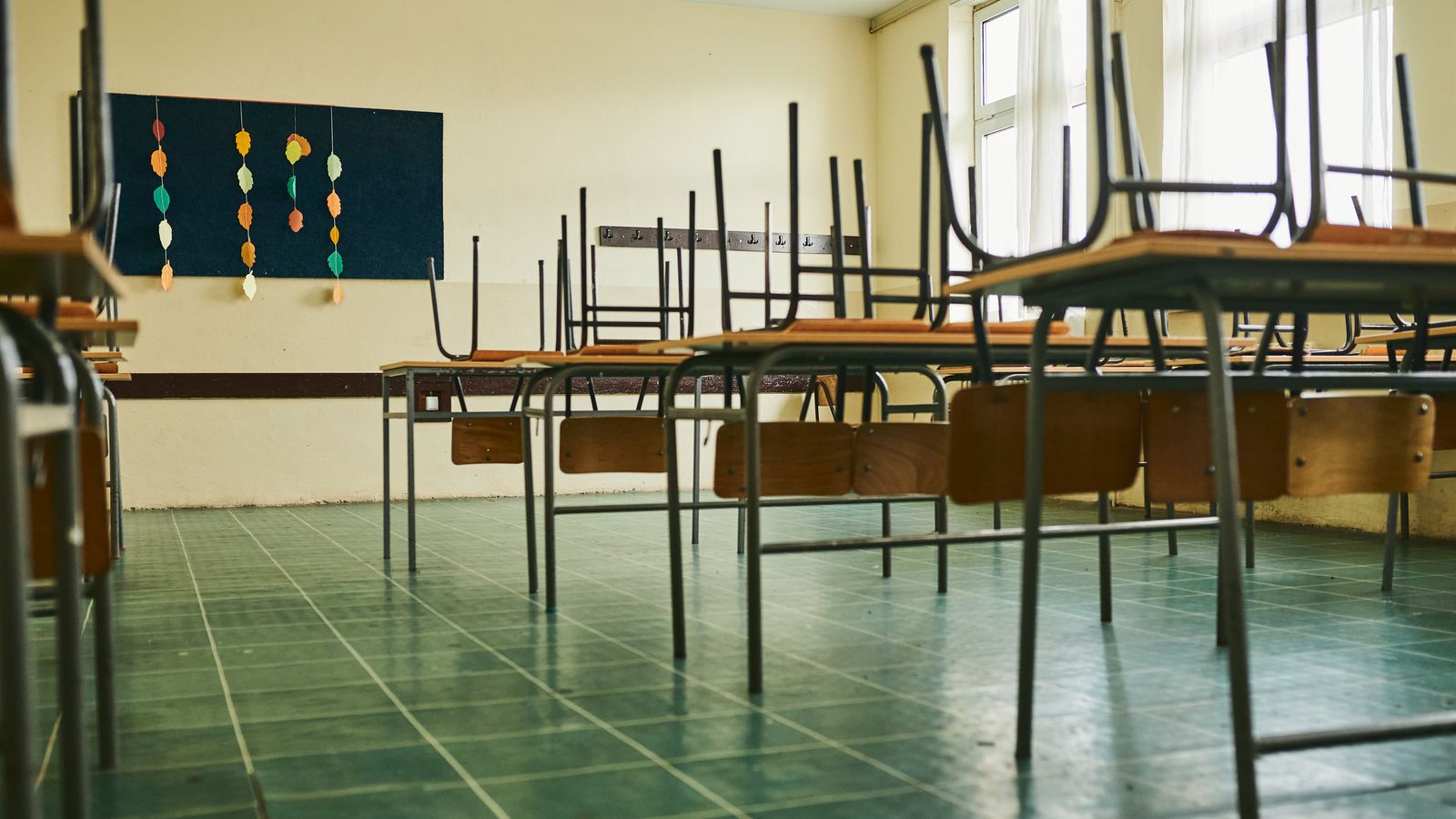More than one million children in England were away from school for COVID-19-related reasons towards the end of term, according to government figures.
On Friday 16 July, around 1,126,000 pupils missed class, compared with 859,000 the previous Friday, Department for Education statistics showed.
The number was the highest since all students returned to classes in March.
The figures for 16 July included:
• 994,000 children isolating due to possible contact with a COVID-19 case
• 48,000 confirmed cases of coronavirus
• 33,000 suspected cases
• 50,700 pupils away because their school was closed as a result of COVID-19
Geoff Barton, general secretary of the Association of School and College Leaders, said: “This data shows very starkly that it has been an extremely challenging end to an extremely challenging school year.
“Two things must happen: One, the government must put a much greater focus on putting an end to educational disruption in the autumn term and provide more support to schools and colleges.
“Two, it must also provide a much more ambitious and better funded recovery plan to address the learning loss experienced by many pupils during the pandemic.”
Follow the Daily podcast on Apple Podcasts, Google Podcasts, Spotify, Spreaker
“The plans it has announced so far are a long way short of what is needed by children and young people,” he said.
Children have to isolate for 10 days if another child in their bubble tests positive for the virus.
The bubble can be as large as an entire school year group.
But this will change on 16 August, when children will only have to isolate if they have tested positive.
Regional figures showed the highest rate of COVID-related absence was in the North East – 26.5% were away from school on 15 July, compared to the lowest figure: 9.6% in London.
The DfE figures were adjusted to exclude students in Years 11 to 13, as they were not expected to attend at that time of year.
In the North East, 11.1% of teachers and school leaders were absent for COVID reasons on 15 July, compared with 6.6% of teachers and school leaders nationally.
Paul Whiteman, general secretary of school leaders’ union NAHT, said: “It is clear that this level of disruption cannot continue next year. However, the government needs to address the root cause of the problem, and not just the symptoms.
“Removing the requirement for close contacts to automatically self-isolate will no doubt reduce absence figures, but it is important the government does more to actively reduce case numbers amongst children and transmission in schools.
“There is so much more the government could be doing to give parents and school staff confidence ahead of the new school year and, ultimately, to make schools safer.”
A DfE spokeswoman said: “Where children needed to isolate last term, schools were required to offer immediate access to high-quality remote education.
“As of step 4 (of the government’s roadmap out of lockdown), schools no longer need to operate a bubble system, and from 16 August pupils will not need to self-isolate should they come into contact with a positive case, in line with the position for wider society.”






















